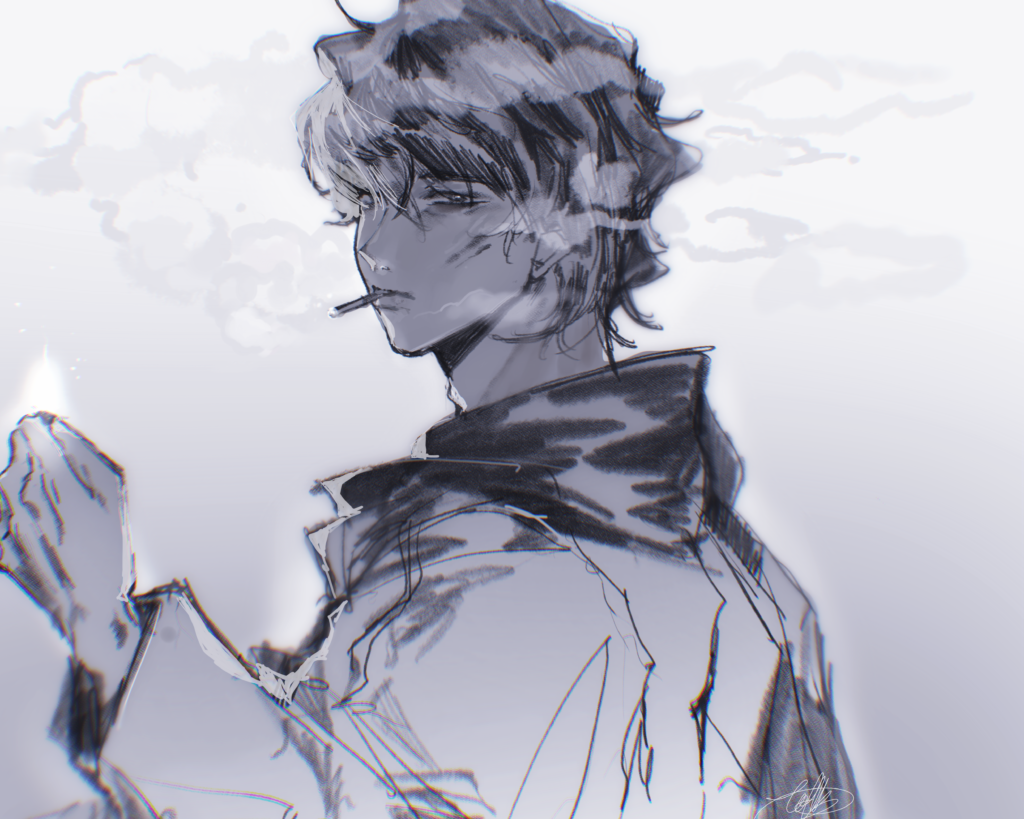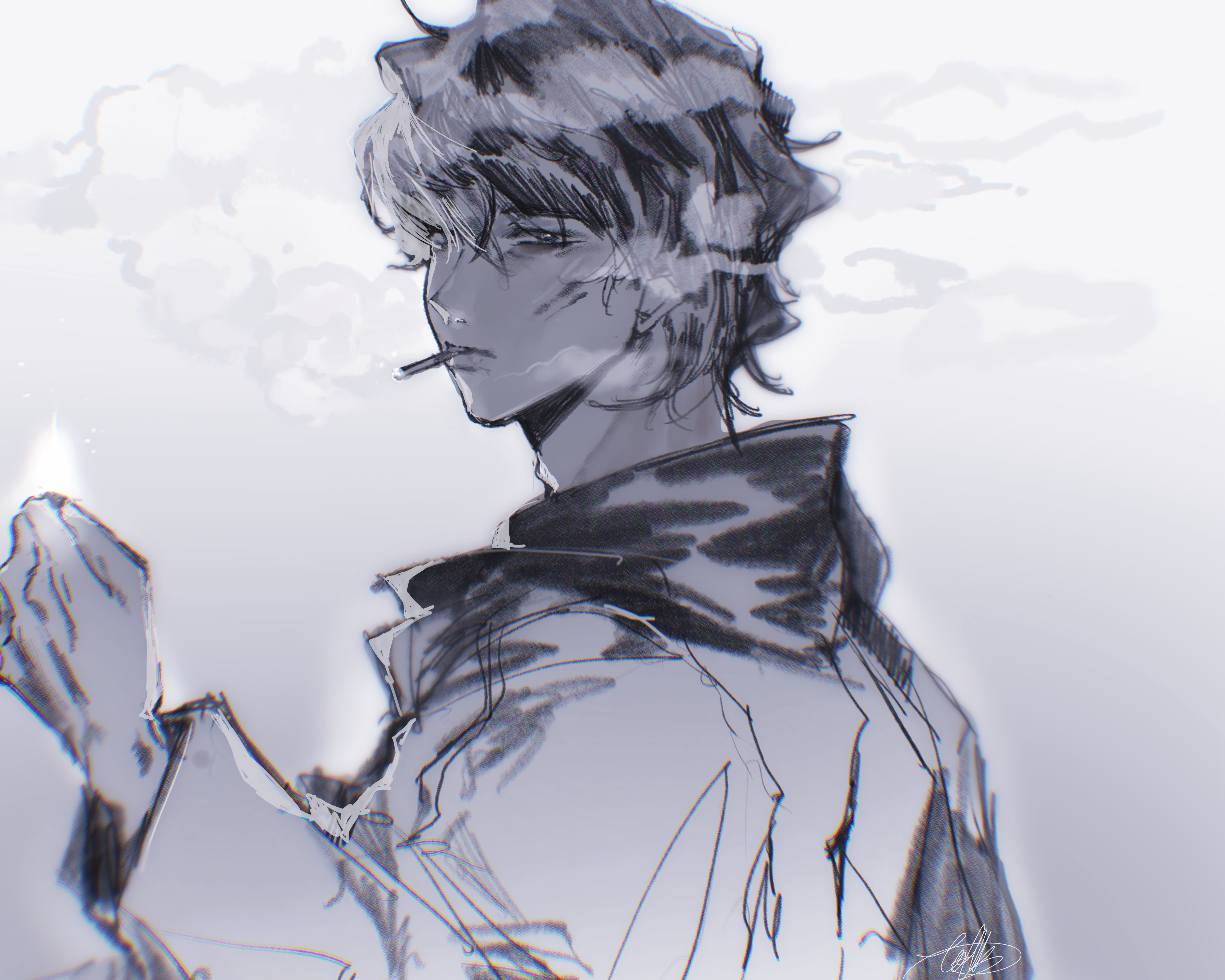⅘ stars
The following review is from a film screening held at Tsoifest 2022.
Throughout Tsoifest, I’ve been hearing new and fascinating things about the life and career of Soviet rock god Viktor Tsoi. I spend my time hearing from people like Joanna Stingray and Rachid Nugmanov who have had a personal connection with Tsoi, as they describe their experiences working or hanging out with him. What I took out of the panel discussions was that Viktor is someone who wasn’t fully into being the godlike figure of a moment in time, but someone who wanted to start a movement meant to promote freedom and fun. Another thing I learned from Tsoifest is how in film, Tsoi never really considered himself an actual actor as compared to acting as himself within his films. From knowing all that, it’s clear that this was something that Rachid wanted to imitate in “The Needle.”
“The Needle” sees Viktor Tsoi play Moro, a man who has left the life of crime, who returns to his hometown of Alma-Aty, Kazakhstan to collect an unpaid debt. As he waits for the debt to be paid, he decides to pay a visit to his ex-girlfriend Dina (Marina Smirnova) and attempts to bond with her. While spending time with her, he then discovers that she has become a morphine addict. This realization gives him another purpose to stay in Alma-Aty; to help Dina kick her addiction and take down the drug mafia that are reinforcing it.
The more I think about this film, the more I seem to enjoy it. One thing I’ll say first is that the director approved restoration is amazing, with the images reminding me about the also superb restoration of Abbas Kiarostami’s “Close-Up.” The film seems to have more beautiful saturated colors that mix well with the warm colors that film negatives are known for giving images. If you were to put images from the restoration into a modern A24 film, you probably wouldn’t find any difference. To continue with the cinematography of “The Needle,” the camerawork is definitely well developed. Even with the obvious style of improvising camera movement and framing similar to “Breathless” may do, you can tell that director Rachid Nugmanov places purpose to what he decides to keep or leave inside the frame.
The editing and pacing is also another memorable part of the film. Although there is a clear and conventional story in this film, its structure just feels all over the place. Some scenes don’t fully contribute to the story, but are great for giving us a more emotional experience that can make us understand the dreamlike and somewhat absurdist world that Moro has returned to for his debt and to take down the drug mafia. It also shows the world that Moro tries to use to reconnect with Dina and that could be able to take her out of her morphine addiction. So when the film finishes, you still understand what happens in terms of the story as well as be able to know what the characters undergo mentally or emotionally.
Tsoi’s belief that he is not an actor in his films enhances how he does the movie. His balance between trying to be himself and having to explicitly play a fictional character is what represents the anatomy of the film. Just like the transcendent duality between reality and fiction in the story, there is the same concept found in Tsoi’s more reserved and mysterious performance. Another great performance to talk about is Marina Smirnova as Dina. There are some scenes in which she is silent and uses more body language than dialogue. And the way she performs this silence works well for someone who is struggling with a morphine addiction, as she seems to be dazed and lost in her life and in this world that doesn’t feel so grounded.
During this particular Q&A session, I did ask Nugmanov a question about his writing. I brought up one of his influences, Jean-Luc Godard, and a quote he once said: “A story should have a beginning, a middle and an end, but not necessarily in that order.” I then asked him: “Is that a quote that you live by in your work?” What Rachid answered made me realize what made this film work. After confirming that he has heard the quote and agrees with it, Rachid then says how when you mix up the events within the film, the key is to make the story simple. If you were to put too much information and make the conventional story very complex, it would become a bloated mess that many people could expect from subverting story structure. That encapsulates the reason why I didn’t seem artistically offended by the loose yet simple plot shown in the film, and this time, I am able to understand and feel the film that Rachid decided to make here.
Special Thanks to Rita Safariants (Associate Professor of Russian in the Department of Modern Languages and Literature), and her course FMST 221: Russian Cinema After the Fall.


